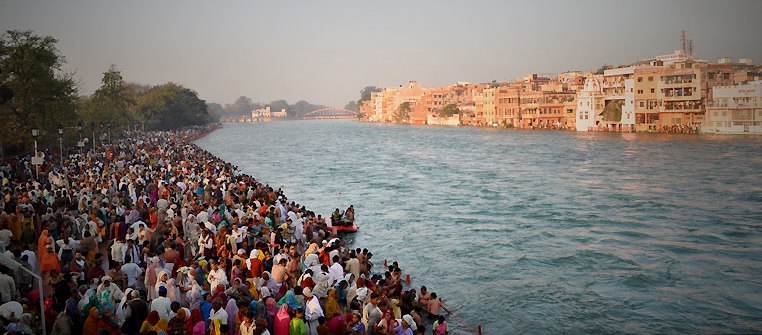
Kumbh Mela is the greatest get-together of faith-driven people gathering at one particular spot to bathe in the holy water. Kumbh Mela is widely known as the ‘world’s largest congregation of religious pilgrims‘. According to Hindu mythology, the origin of Kumbh Mela is mentioned in the ancient legends of Samudra Manthan.
The Samudra Manthan
The Samudra Manthan tells us the tale of the battle between the Devas and the Asuras for winning Amrita. Amrita is widely known as the drink of immortality. Samudra Manthan means the production of Amrit by churning of the ocean.
The Amrit is then placed in a pot called the Kumbha. According to Hindu mythology, Lord Vishnu took the avatar of Shatavari to save the Amrita from Asuras. Lord Vishnu flew after taking the Kumbha, but unfortunately few drops of Amrita fell at four locations. From them on, Kumbha Mela is celebrated in these four locations.
Four Locations of Kumbh Mela
The four locations where Kumbha Mela is celebrated are Haridwar, Allahabad, Nashik, and Ujjain. The Haridwar Kumbh Mela is celebrated at the banks of River Ganga, the Allahabad Kumbha Mela is held at the banks of confluence or Sangam of River Ganga and River Saraswati. The Nashik Kumbha Mela is held at the banks of Godavari River and the Ujjain Kumbha Mela is celebrated at the banks of River Shipra.
According to UNESCO’s representative list of the intangible cultural heritage of humanity, Kumbha Mela is a mass spindle pilgrimage wherein people come and bathe in the holy river with the faith of washing away all the sins and head towards a new start in life.
Kumbh Mela and Maha Kumbh Mela
The Kumbh Mela is celebrated after 12 years of all the four locations in India. The Kumbha Mela which is celebrated at Nashik is held 3 years after the Kumbha Mela held in Haridwar. The dates of Kumbha Mela are decided based on Vikram Samvat Calendar by a pundit/Jyotish.
Vikram Samvat calendar comprises of the study in zodiac positions of the planet, Jupiter along with Sun and the Moon. When the Jupiter planet is in the Leo (Simha in Hindu astrology), the Kumbha Mela at Nashik and Ujjain is celebrated. The Kumbha Mela at Haridwar and Allahabad is celebrated every six years, henceforth called the Ardha (half). The Kumbha Mela occurring after complete 144 years is celebrated as the Maha Kumbha Mela.
Dip in the Holy Waters
Most people celebrate Kumbha Mela by taking a dip in the holy waters. You can grab the opportunity to meet the Naga Sadhus which has become an outstanding image of Kumbha Mela. If you are planning to visit the Kumbha Mela, you can enjoy eating at Bhandara which is free food provided by the devotees.
You can participate in the Kirtans and recite the name of God along with the Sadhus and Gurus at the Mela. The most interesting part is listening to the stories from Indian texts by Sadhus and Acharyas. Never miss out on visiting a Kumbha Mela and dive into the beauty of this unique festival in the world.

Pingback: The Tradition of Pilgrimage - Auchitya
Pingback: River Ganga- The Holy River - Auchitya